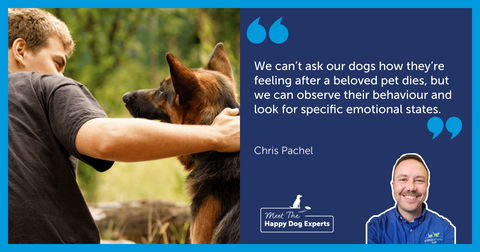
8 Tips on How to Discourage Behaviour Problems in Puppies by Happy Dog Expert
Some common scenarios that you may encounter with a recently adopted puppy include chewing items, excessive activity or toileting in unsuitable areas. Although the appearance of some of these behaviours is normal in puppies, some can get out of control and negatively impact the developing relationship between you and your pup.
Can we minimise the chance of these behaviours happening or even avoid them?
Here are some tips from our Happy Dog Expert to prevent your puppy developing common behaviour problems.
1. Create a clear and stable routine for your puppy
Consider all activities that affect your puppy, such as walks, rest, meals, playtime, training and time alone at home.
The more consistent your puppy's routine is, the easier it will be to establish good habits and keep your puppy relaxed at home. If you add a signal (verbal or gesture) for each activity, and mark that activity before starting it, you will make it easier for your puppy to feel more confident and calm.
2. Cover all your puppy's behavioural needs
There are some daily needs that a puppy has including, several walks, social interaction with people and other dogs, several play sessions, chances to explore and use their nose (e.g. a game to search for hidden food) and to chew, time to rest and for physical contact with you.
The frequency, duration, and intensity of each of these activities will vary for each individual, depending on factors such as temperament, size, breed, or age.
3. Be consistent and clear in your training
It is important to have clear and consistent rules for your dog, from the first day. Lack of consistency in your puppy's upbringing will confuse them, and can lead to potential conflict with family members. A common example is whether your puppy is allowed to climb on the sofa allowing this sometimes and not others, or just some members of the family letting your puppy climb on to the sofa is confusing for your puppy.
A good strategy is to consider the expectations for your dog before they are welcomed into your family and all agree the rules and limits for the puppy from the start.
4. Create a relationship based on trust and affection
Just as your puppy will be a source of emotional support, trust and affection, this must be reciprocal for your puppy. The more this premise is respected, the better the bond between your puppy and your family will be, and this in turn promotes and maintains balanced behaviour of your puppy.
To do this, it is necessary to learn to understand the behaviours and signals that your puppy is showing in each situation, and act accordingly. An example is watching how your puppy interacts with other dogs in the park, and helping your puppy by offering protection if he is scared, calming them if they are overexcited, or taking your puppy away from the park if they are showing signs that they are feeling uncomfortable or do not want to play anymore.
Learning to interpret your puppy's emotions is not always simple; speak to your veterinarian who can help you, as well as to clarify any doubts about your puppy's behaviour.
5. Interact appropriately with your puppy
Your puppy must associate the physical contact of people with a pleasant moment of calm and affection. In this way, your puppy will positively perceive the interaction, feeling comfortable and safe.
Therefore, petting must be performed in a way to relax your puppy rather than exciting them. To achieve this start physical interaction only when he is calm.
Also, when you stroke your puppy, do it gently, with slow movements and in the direction of their hair. As you do so, speak to them with a low, pleasant tone of voice. In this way, it is very likely that your puppy will enjoy the moment so much that they will want more. Discover where your puppy prefers to be stroked too.
6. Provide items to play, explore, and gnaw on
Puppies use their mouth to "discover the world". By picking up and manipulating objects with their mouth, puppies capture olfactory, tactile and taste information, in addition to developing physical skills important for play. Toys are ideal for your puppy, as they provide an opportunity to explore, to play and also to gnaw. In addition, they are a good source of mental stimulation. There is a wide variety of toys with different textures, hardness and sizes and functions on the market; your veterinarian will be able to advise you on which ones are best suited to the characteristics of your puppy.
7. Encourage a calm demeanour
When we are at home with our puppy we should create an environment of calm, so that they associate being at home with being relaxed. These tips will help your puppy understand this:
- Every time your puppy shows calm behaviour, reward them with a few words in a pleasant tone, gently stroke them or simply give them your attention.
- Start activities (such as a walk or a play session) with your puppy only when they are calm.
- For moments of more excitement (for example during play), take them to a specific area of the house, or if possible outside, so that they connect that space with more intense activities.
- Whenever your puppy uses their rest area, reward them and leave them there undisturbed.
8. Reinforce good behaviours
Any behaviour that you want your puppy to repeat should be rewarded. For example, give your puppy attention whenever they interact with you in a calm way, plays correctly, walks calmly or toilets in suitable areas. Remember, it is not always necessary to reward your puppy with food, sometimes simply a look full of affection towards your puppy can be very powerful.








































